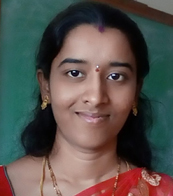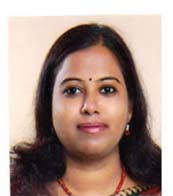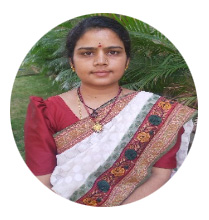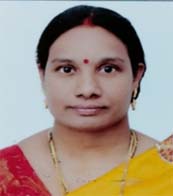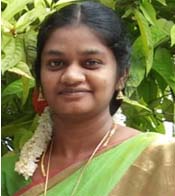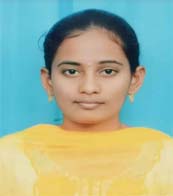DEPARTMENT OF SCIENCE
NAME OF THE PROGRAM: I B.Sc SEMISTER-I
NAME OF THE COURSE: The English Turf
No. of Credits & Course Type: 3& CBCS
COURSE CODE:
COURSE OUTCOMES:
- To make students use perfect grammar introducing basic concepts of English grammar and to improve good usage of vocabulary for the learners.
- To impart language skills, inculcate values and critical thinking amongst the learners by introducing the concepts of interpersonal skills.
- To improve Listening, Speaking, Reading and Writing and understanding skills of English language through prose and poetry.
- To create awareness on linguistic terms and to give inbuilt potential to meet the diverse language needs.
NAME OF THE COURSE: SANSKRIT
COURSE CODE:BC103
No. of Credits &CourseType: 5 & CC2A
COURSE OUTCOMES:
- Student may know how to elect a leader, and get acquainted with leadership qualities. The lesson “MudhabishekthumVaradhaThamarvasi” discusses on the above aspects.
- Student can easily understand about the nature. The Mountains of India are one of the wonders in the world by this lesson. This lesson is an example to the writing skill of Mahakavi “KALIDAS”.
- To equip the students to learn about sincerity and morality. The lesson “Dharmabadhodovaarikaa” reveals about the sincerity of a gate keeper (Dharmapalaka).It also reveals about the good behavior of gate keeper.
- To help students understand that every person should be thankful to other in daily life by this lesson. The lesson “KruthagneyNaasthiNishkruthi” is taken from “Panchathantram”.
- To help students learn about the Sandhi and Shabdha essentially. Sandhi and Shabdha are main items in grammar in any language.
NAME OF THE COURSE: ENVIRONMENTAL STUDIES
COURSE CODE:
No. of Credits: 2
COURSE OUTCOMES:
- Students feel responsible for being a human being.
- Student shows interest about water conservation, rainwater harvesting.
- Draws information about pollution, global warming, ozone layer depletion.
- Draws information about Human rights.
- Field study makes students more responsible about disaster management.
NAME OF THE COURSE :Differential and Integral calculus
COURSE CODE: BS 101
No. of Credits &Course Type : 5 credits
COURSE OUTCOMES:
- Aimedat exposing the students to some basic notions in differential calculus.
- Students must be efficient in solving partial differentiation.
- Understand the concept of Euler’s theorem and Homogeneous functions.
- Able to solve total differentials and Taylor’s series problems.
- Students must be able to understand and find the maxima and minima of a function of two variables.
- Should be able to evaluate the volume of solids using cross sections.
- Capable to evaluate the area of surfaces of revolution.
- To be consistent in calculating the length of an arc of a curve when the equations are given in parametric and polar form.
NAME OF THE COURSE: Programming in C
No. of Credits & Course Type: 5& DSC-3A
COURSE CODE: BS106
COURSE OUTCOMES:
- Choose the right data representation formats based on the requirements of the problem.
- Approach the programming tasks using techniques learned and write Pseudo Code.
- Write the program on a computer, edit, debug, correct recompile and run it.
- Identify tasks in which the numerical techniques learned by the students are applicable and apply to write programs and use computer programming effectively.
- Demonstrate the understanding skills of computer programming language concepts.
- Ability to design and develop C Program’s analyses and compile the concepts of Data types, Arrays ,Pointers ,Unions, Structures and also must be use the concept of Arrays with Structures also.
NAME OF THE COURSE: MECHANICS&OSCILLATIONS
COURSE CODE:
No. of Credits & Course Type: 4 CBCS
COURSE OUTCOMES:
- Understand Scalar field and Vector field.
- Derive Stroke’s,Gauss and Greens theorems
- Understand Collisions under two and three dimensions and study the relation between scattering cross section and impact parameter
- Identify and apply the laws of mechanics along with the necessary mathematics for solving numerical.
- Gain knowledge on Central forces – definition and examples, Conservative nature of central force ,Conservative force as a negative gradient of potential energy,Equation of motion under central force
- Derive Kepler’s three laws,Coriolis force and its expressions
- Understand physical characteristics of SHM and obtaining solution of the oscillator using differential equation and different kinds of Oscillation
DEPARTMENT OF SCIENCE
NAME OF THE PROGRAM: I B.Sc SEMESTER-II
DEPARTMENT OF ENGLISH
NAME OF THE COURSE: The Englsih Turf
No. of Credits & Course Type: 3& CBCS
COURSE CODE:
COURSE OUTCOMES:
- To improve LSRW skills to the learners through prose and poetry and also to improve the understanding levels of the language of the students.
- To create awareness on linguistic terms and to give inbuilt potential to meet the diverse language needs.
- To create awareness on the usage of figures of speech in English language for the better understanding of language among the learners by introducing simile, metaphor, oxymoron and hyperbole.
- To make learners strong to meet the English needs of the real environment by introducing concepts like Paragraph writing, Descriptive language, Argumentative Writing, Sequencing etc.
- To inculcate good behavior habits among the learners towards others by introducing Decision making and Ethical behavior.
NAME OF THE COURSE: SANSKRIT
COURSE CODE : BC 203
No. of Credits & Course Type: 5 & CC 2B
COURSE OUTCOMES:
- To help students learn about sincerity, charity. The lesson “ SakthuprasthasyaMahathvam ”teaches that Everybody should do good things heart fully without any ego thoughts.
- To help students learn the essence of philosophical thinking and peaceful behavior. The lesson “BudhasyaVyragyodhaya” discusses the above facets.
- To help thestudent understand that help should not be taken from enemies in routine life. It will become very dangerous to their life. The lesson “ NaGangadhathaPunareythiKoopam“ reveals about the truth.
- To give an understanding of good and bad behaviours. The lesson “ Daivasurasampadhyoga“ as taken from “Bhagavad Gita” The “Bhagavad Gita” is a great philosophy of Indian culture.
- The student can understand about the nature, particularly about the planets, trees, earth quakes and rain fall etc by the lesson “VygnanikaSamhitha”. We can also understand about the scientific nature. VaraahamihiraAryabatta : all great scientists in ancient India. We are proud of our ancient writers.
- The Dhathva and Samaasa are major parts of the Sanskrit grammar. By learning about the Dhatva and Samaasa the student can learn how to write good sentences in Sanskrit.
NAME OF THE COURSE: Basic Computer Skills
No. of Credits & Course Type: 2& CBCS
COURSE CODE: AECC 2
COURSE OUTCOMES:
- To identify the components and functions of the hardware used in a computer system
- To describe the functions of System software
- To provide students with skills they need to create the documents, spread sheets and presentations
- To maintain Files and Folders and Common Utilities of Operating System.
- To learn how to work with Internet.
- To access sent e-mails & Instant Messaging
NAME OF THE COURSE : Differential Equations
COURSE CODE: BS 201
No. of Credits & Course Type : 5 credits
COURSE OUTCOMES:
- Train to apply their skills in solving some of the problems of engineering and science.
- Work on basic applications described by second order linear differential equations with constant coefficients.
- Able to identify different methods of differential equations and solve them using appropriate formulas.
- TobeefficientofsolvingdifferentialequationsusingLagrange’smethodofmultipliers.
NAME OF THE COURSE: Programming in C++
No. of Credits & Course Type: 5 & DSC-3B
COURSE CODE: BS206
COURSE OUTCOMES:
- To practice the fundamental programming concepts and methodologies which are essential to build good C/C++ programs via laboratory experience
- To write reusable modules (collection of functions).
- The course is designed for providing knowledge of C & C++. Students will be able to develop logics which help them to create programs , applications
- Approach the programming tasks using techniques learned and write Pseudo Code.Write the program on a computer, edit, debug, correct recompile and run it.
- Identify tasks in which the numerical techniques learned by the students are applicable and apply to write programs and use computer programming effectively.
- Ability to design and develop C++ programs using the OOP’s benefits like Inheritance & Polymorphism.
NAME OF THE COURSE: THERMAL PHYSICS
COURSE CODE:
No. of Credits & Course Type: 4 CBCS
COURSE OUTCOMES:
- Understood average speed,most probable speed and R.M.S.speed.
- To get the learning about the thermal conductivity,viscosity and diffusion in gases.
- UnderstandthenatureofthermodynamicpropertiesofmatterlikeInternalEnergy,Enthalpy,entropy,temperature, pressure and volume.
- Evaluateentropychangesinawiderangeofprocessesanddeterminethereversibilityorirreversibilityof a process from such calculations.
- Understandtheinterrelationshipbetweenthermodynamicfunctionsandabilitytousesuchrelationshipsto solve practical problems.
- Gain knowledge about classical and quantum statistical mechanics, including Maxwell Boltzmann,Fermi-Dirac,and Bose-Einstein statistic
DEPARTMENT OF SCIENCE
NAME OF THE PROGRAM: II B.Sc SEMESTER: III
NAME OF THE COURSE: English in Use
No. of Credits & Course Type: 3 & CBCS
COURSE CODE:
COURSE OUTCOMES:
- To make students use English avoiding grammatical errors introducing the concepts of prepositions, voice, concord, connectives.
- To make students understand the difference between American English and British English by giving the common differences between American English and British English.
- To improve technical writing and formal writing among the learners introducing the concepts of Technical vocabulary, Business Reports, Discursive Essays , Argumentative Essays.
- To create awareness on ‘use’ rather than ‘usage’ on how the English language is used rather than how it should be used.
- To make students understand and meet a variety of real-life communication needs- to give and seek information, to express opinions and to convey ideas and feelings.
NAME OF THE COURSE: SANSKRIT
COURSE CODE:BC303
No. of Credits &CourseType: 5 & CC3B
COURSE OUTCOMES:
- ” AbhignanaSaakunthalam” the drama which is written by “Kalidasa” has got worldwide appreciation. The student may have learnt the fact that is love marriages are not correct to the future life without intimating parents.
- By the character “Dhushyantha” the student will be benefited by the getting the truth, that is taking fast decisions are very dangerous.
- Helps the students to learn the Sastraa like Grammer, Astrology, Poetry and Ayurveda etc are great.By the lesson “Navarathnani” , the students know above.
- Helps student to understand that truth, sincerity and willpower lead to make a person as a great person by the conversation “Vysampayana and Shudhraka”
- The lesson “Ramadhasa” proves, that all religions are great. In this connection the students may learn that all religions will be respected by them and at the same time we must have devotion and dedication about the God.
- The students will get linguistics knowledge by the lesson “HalanthaSabdharupaani”
NAME OF THE COURSE: Communication Skills
COURSE OUTCOMES:
- Identify common communication problems
- Understand the role of communication in learning process
- Learning to communicate through digital media
- Understand the importance of empathetic listening
- Explore communication beyond language.
Course Outcomes
- Understand about good communication skills are
- Know about the role of listening in improving communication skills
- Know about the steps to implement to improve communication skills.
NAME OF THE COURSE: PYTHON – I
COURSE CODE: BS301
No. of Credits & Course Type: 2 credits
COURSE OUTCOMES:
- This course is designed for learners with limited coding experience, providing a solid foundation of not just python, but core Computer Science topics that can be transferred to other languages.
- The modules in this course cover inheritance, encapsulation, polymorphism, and other object-related topics.
- Good understanding of Object Oriented features of Python.
- Object Oriented Python features implementation.
- Writing Classes and Creation of Objects.
- Inheritance and Polymorphism with examples.
- Data hiding, Class variables, Class Methods, Static Methods.
- Learn OOP concepts to implement in Python.
- Gain knowledge of code reusability through inheritance and polymorphism concepts Learn how to handle exceptions in OOP.
NAME OF THE COURSE : Real Analysis
COURSE CODE : BS301
No. of Credits & Course Type: 5
COURSE OUTCOMES:
- Aimed at exposing the students to the foundations of analysis which will be useful in understanding various physical phenomena.
- Describe the basic concepts of sequence,convergent sequence,and limit of a sequence
- To be able to evaluate limits of sequences and series using appropriate limit tests.
- Understand the concepts of continuity,uniform continuity,and limit functions.
- Grasp the concepts of differentiation and demonstrate basic knowledge of L’ Hospital rule and Taylor’s theorem.
- To be efficient in understanding the applications of real analysis.
- C++ classes.
- It is the first course in the Accelerated CS Fundamentals specialization, and subsequent courses in this specialization will be using C++ as the language
NAME OF THE COURSE: DATA STRUCTURES WITH CPP
No. of Credits & Course Type: 5 & DSC-3C
COURSE CODE: BS306
COURSE OUTCOMES:
- Learners how to write a program in the C++ language.
- How to set up a development environment for writing and debugging C++ code and how to implement data structures as for implementing the data structures covered in class.
- Approach the programming tasks using techniques learned and write pseudocode.
- Develop confidence for self-education and ability for life-long learning needed for Computer language.
- IT including basic programming fundamentals, object oriented programming and in-depth coverage of data structures and algorithms
- It’s a very good thing to learn C++and that to with Data Structures and Algorithms because this will really help you in understanding the features of OOPS (Object Oriented Programming System).
- The fundamentals of Data Structures, abstract concepts, and how these concepts are useful in problem-solving.
- This course covers in detail the design and analysis of algorithms along with the basics of C++ programming language including elementary data structures such as arrays and linked lists, abstract data types like stacks, queues, and trees.
- It also provides you an exposure to various searching and sorting techniques along with their performance analysis.
NAME OF THE COURSE: ELECTROMAGNETIC THEORY
COURSE CODE:
No. of Credits & Course Type: 4 CBCS
COURSE OUTCOMES:
On successful completion of this course students will:
- Gain Knowledge on the basic concepts of electrostatics. Conservative nature of electric field.Learn about thepotential energy of a system of charges,
- Acquire knowledge on the concept of magneto statics.
- Learn different laws of Magnetostatics
- Understand the concept on electromagnetic induction and applications.
- Acquire knowledge how to apply electromagnetic induction laws to Solenoid,Toroidetc.
- Gain knowledge on displacement current and Maxwell’s equations. Learn about EM waves propagation and their properties.
- Understand the concept of Network elements and network theorems, Two port networks, Z and Y parameters
DEPARTMENT OF ENGLISH
NAME OF THE PROGRAM: II B.Sc SEMISTER: IV
NAME OF THE COURSE: English In Use
No. of Credits & Course Type: 3& CBCS
COURSE CODE:
COURSE OUTCOMES:
- To make students use English avoiding grammatical errors introducing the concepts of concord, connectives.
- To improve technical writing and formal writing among the learners introducing the concepts of Technical vocabulary, Business Reports.
- To create awareness on ‘use’ rather than ‘usage’ on how the English language is used rather than how it should be used.
- To make students understand and meet a variety of real-life communication needs- to give and seek information, to express opinions and to convey ideas and feelings.
NAME OF THE COURSE: SANSKRIT
COURSE CODE:BC403
No. of Credits & CourseType: 5 & CC4B
COURSE OUTCOMES:
- The students get the awareness about the greatness of the Indian family system by the lesson “ChitrapataDarshanam”.
- The students may know that an ordinary man become as great person and achieve anything in his life by the grace of the “Guru”(Teacher) By the lesson “Vivekananda Vijayam”
- Helps the students to get awareness that the children have to follow the tradition and customs of their family. By the lesson “VisruthaCharitham” the students may understand that They should also respect the ideals of their parents.
- By studying the lesson the student may take the “Druva” character as an ideal person in their life and they will enrich the goal in their lives.
- To help studentsget the linguistics knowledge by the lesson “KrudhanthaRoopani”
NAMEOFTHECOURSE: PYTHON -II
COURSE CODE: BS401
No. of Credits & Course Type: 2credits
COURSE OUTCOMES:
- This course is designed for learners with limited coding experience, providing a solid foundation of not just python, but core Computer Science topics that can be transferred to other languages.
- The modules in this course cover inheritance, encapsulation, polymorphism, and other object-related topics.
- Good understanding of Object Oriented features of Python.
- Object Oriented Python features implementation.
- Writing Classes and Creation of Objects.
- Inheritance and Polymorphism with examples.
- Data hiding, Class variables, Class Methods, Static Methods.
- Learn OOP concepts to implement in Python.
- Gain knowledge of code reusability through inheritance and polymorphism concepts Learn how to handle exceptions in OOP.
NAME OF THE COURSE: ALGEBRA
No .of credits: THEORY -5
COURSE TYPE: DSC-1D
COURSE CODE: BS: 401
COURSE OUTCOMES:
- Students will be able to find difference between set and group, order of group and elements of group and how to prove the sets are subgroups.
- Able to find the generators of the group and subgroups and how Dihedral groups are used in designing, to check isomorphism between two groups, rotations of cube and soccer ball.
- Applications of permutation groups in banking sectors.
- They can identify the difference between Groups and Rings and compare the properties.
- Students will be able to apply properties of Rings in various fields.
NAME OF THE COURSE: DATA BASE MANAGEMENT SYSTEM
No. of Credits & Course Type: 5 & DSC-3D
COURSE CODE: BS406
COURSE OUTCOMES:
- This course introduces the core principles and techniques required in the design and implementation of database systems.
- This course focus on relational database management systems, including database design theory: E-R modeling, data definition and manipulation languages, database security and administration.
- It also covers essential DBMS concepts such as: Transaction Processing, Concurrency Control and Recovery and various types of databases like distributed database, and intelligent database, Client/Server.
- Students undertake a semester project to design and build a simple database system and demonstrate competence with the fundamental tasks involved with modeling, designing, and implementing a DBMS.
- It also provides students with theoretical knowledge and practical skills in the use of databases and database management systems in information technology applications.
- Understand the basic concepts and the applications of database systems.
- Master the basics of SQL and construct queries using SQL.
- Understand the relational database design principles.
- Familiar with the basic issues of transaction processing and concurrency control.
- Familiar with database storage structures and access techniques.
NAME OF THE COURSE: WAVES&OPTICS
COURSE CODE:
No.of Credits& Course Type: 4 CBCS scheme
COURSE OUTCOMES:
- Gain knowledge on fundamentals of waves: transverse wave propagation along stretched string,general solution and overtones.
- Learning for longitudinal vibrations in bars for four different case sand tuning fork.
- To get the understanding about superposition principle, interference by division of amplitude and division of wave front by considering different examples.
- Understand the properties of light like reflection,refraction,interference,diffraction etc.
- Understand the applications of diffraction and polarization.
- Understand the applications of interference in design and working of interfero meters.
- Understand the resolving power of different optical instruments.
- Distinction between Fresnel and Fraunhofer diffraction,concept of half period zones.
- Get knowledge about different methods to get polarization, Nicol’s prism,optical activity.
DERTMENT OF SCIENCE
NAME OF THE PROGRAM: III B.Sc SEMISTER: V
NAME OF THE COURSE: LINEAR ALGEBRA
No. of credits THEORY- 3 + PRACTICAL- 1 =4
COURSE TYPE: DSC-1E
COURSE CODE: BS: 503
COURSE OUTCOMES:
- Students will be able to learn topics on vectors and vector fields.
- Linear independent and dependent setsBasis and dimension of vector space.
- Will be able to find Rank of the matrix by different methods, smallest and largest ranks.
- Will be able to find Eigen value and Eigen vectors, Rank of the matrix by different methods, smallest and largest ranks.
- Diagonalizationprocess and applications to Differential Equations and linear transformation between two vector spaces.
NAME OF THE COURSE: Programming in JAVA
No. of Credits & Course Type: 4 & DSC–3E
COURSE CODE: BS505
COURSE OUTCOMES:
- Understand fundamentals of programming such as variable, conditional and iterative, execution, methods etc. including defining classes, invoking methods, using class libraries.
- Have an ability to write a java program to solve specified problems using laboratory experience.
- The use of Java in variety of technologies and on different platforms.
- Knowledge of object-oriented programming paradigm in Java programming language.
- Develop software in Java application using Java programming language and choose an approach to solve problems, starting from the acquired knowledge of programming and knowledge of operating systems.
- Students are able to connect a java program to DBMS and perform insert, update, and delete operations on DBMS Table.
NAME OF THE COURSE: English in Action
No. of Credits & Course Type: 3& CBCS
COURSE CODE:
COURSE OUTCOMES:
- To improve understanding skills of the language among the learners by
introducing prose and poetry. - To sensitise students to the imperative need for gender equality and to
promote respect for difference. - To improve the usage of English without grammatical errors by
introducing grammatical concepts, question tags, verbs and conditionals. - To improve the vocabulary of the learners by introducing the concepts
of Indianisms, Analogy and Odd Word Out. - To help students write film and book reviews.
- To make students understand and meet a variety of real-life
communication needs by introducing technical vocabulary
relating to film and literature
NAME OF THE COURSE:SANSKRIT
COURSE CODE: BS301
No. of Credits & Course Type: 2 credits
COURSE OUTCOMES:
- The Lesson Shishyanu Sasanam as taken from Taittiriya Upanishad .It
Reveals that the Student about the good conduct and behavior for
example the student in his life how to move in this Society and how to
respect his Parents, teachers and elders. - The Lesson Bhramhashakti Gariyasi as taken from Kenopanishad
Generally we face so many problems and get achievements but it is not correct to know that energy is the cause for their achievements. God is
responsible for all these things. There is a Proverb Devam Manush
Roopena. - The Lesson Madhuro Padeshaha as taken from Madhura Vijayam
Written by Ganga Devi. In this lesson the Poet explained so many
things about human nature. The Problems arranging the youth, ego by
power, financial stability and moral values taught by Guru Extra are
clearly described in this lesson - There are two kinds of Alankaras in Sanskrit Literature. That is
Shabdhalankaraha, Ardhalankaraha by understanding the Alankaras
the students may write anything attractively. In the same way students
may become good aurotors. - By the lesson Mahakavi Shastrakaravibhagaha students can
understand about the eminent and prominent writers in Sanskrit
Literature. They are Paneni Koutilyaha, Bharata Muni, Bharavi,
Maaghaha, Sriharshasha
NAME OF THE COURSE: -MODERN PHYSICS
No. of Credits & Course Type: GE–1
COURSE CODE: BS501
COURSE OUTCOMES:
- Able to classify different atomic structure models and their failure.
Electron spinning its experimental proof by SternGerlach experiment
and different quantum numbers. - The knowledge of fundamentals of Raman effect and different types of
molecular spectra. - The student will be able to learn the fundamental concepts on
Quantum behaviour of matter and Heisenbergs uncertainty principle. - Introduce to various nuclear structure models, nuclear radiations and
their detectors also famous Gamows theory for Alpha and beta decay. - Got exposure about different experimental techniques to understand
different crystal structures and their bondings and also the energy
involved into it
NAME OF THE COURSE: BASIC STATISTICS
COURSE TYPE:
COURSE CODE: BS: 50
COURSE OUTCOMES:
- Calculate and interpret the correlation between two variables.
- Calculate the simple linear regression equation for a set of data.
- Employee the principles of linear regression and correlation, including
least square method, predicting a particular value of - dependent variable for a given value of independent variable and
significance of the correlation coefficient. - To find different measures using nominal,ordinal,ratio scale
- Fitting of a straight line second degree parabola by using principle of
least square.
DEPARTMENT OF SCIENCE
NAME OF THE PROGRAM: III B.SC SEMESTER-VI
NAME OF THE COURSE: PHYSICS- ELECTRONICS-P6
No. of Credits & Course Type: 4 & DSE–2F
COURSE CODE: BS606
COURSE OUTCOMES:
- Gain knowledge on basics of semiconductors & devices and their applications in different areas. Learn the basic concepts of Semiconductor diodes such as P-N junction diode, Zener diode and their characteristics and applications.
- To apply the basics of diode to describe the working of rectifier circuits such as Full and half wave rectifiers and solve examples on rectifiers . Learn how to draw the structure of bipolar junction transistor and gain Knowledge on the operation of each device in terms of junction bias voltage and charge carrier movement.
- Gain knowledge on the concepts of the amplifier circuit for given specification and analyse them to discuss oscillator principles, oscillator types, and frequency stability as it relates to its operation .Modulation techniques
- Acquire Knowledge on different number system. Solve examples on converting one form of number system to another form, Boolean laws and theorems, the different logic gates using truth table .Analyse and design different adder circuits.Understand the concept of Network elements and network theorems
NAME OF THE COURSE: M6-SOLID GEOMETRY
COURSE CODE: BS401
No. of Credits & Course Type: 2 credits
COURSE OUTCOMES:
- Students will be able to identify difference between two-dimensional geometry and three-dimensional geometry.
- Different ways to find the equation of spheres, difference between intersecting and non- intersecting spheres.
- Students will be able to find equation of cone and cylinder by different guiding curves and generators
- Students get more knowledge about 2nd degree equation.They can get differences between parabola, paraboloids, hyperbola of one sheet and two sheets
NAME OF THE COURSE : C6 -WEB TECHNOLOGIES
COURSE CODE : BS601/A
No. of Credits & Course Type : 5 credits
COURSE OBJECTIVES
On completion the course students will be familiar with client-server architecture and able to develop a web application using java technologies.
Students are able to develop a dynamic webpage by the use of java script and DHTML.
Students are able to analyse a webpage and identify its elements and attributes.
Create webpages using XHTML and CSS (Cascading Style Sheets), Build dynamic web pages usi9ng Java Script (Client side programming).
Students will gain the skills and lab based experience needed for entry into web application and development careers.
NAME OF THE COURSE: OPTIONAL PAPER – PHP WITH MY SQL
COURSE TYPE: DSE-1F/B
COURSE CODE: BS: 606
COURSE OUTCOMES:
- To understand the basics of php scripting language.
- To impart programming skills to develop server side scripting programs.
- To develop database connectivity using php to process request and response
- To create effective and presentable websites which are interactive with databases.
NAME OF THE COURSE : ENGLISH
No. of Credits & Course Type:Theory 3 credits,Practical’s 1 credit.
COURSE CODE : BS605
COURSE OUTCOMES:
- Read, understand, and interpret a variety of written texts.
- Undertake guided and extended writing using appropriate vocabulary and correct grammar.
- Sensitize students to the imperative need for gender equality and promote respect for difference.
- Equip students with necessary language skills which acknowledge their critical thinking capabilities.
NAME OF THE COURSE: SANSKRIT
COURSE CODE:
No. of Credits & Course Type: 3 CBCS
COURSE OUTCOMES:
On successful completion of this course students will:
- The lesson Dakara Katha taken from the bruhadaranya Upanishad lord Brahma gave the letter the to the manavaha devaha rakshasaha the three categories understood the letter differently manavaha observed the meaning of the Dakara as danam I the same way rakshasaha observed the letter dakara as daya and devataha as taken the meaning of the dakara as damam by the story student can understand the need of damam essentially the devataha daya is essentially to raakshasaha and danam is essentially of manavaha
- The lesson nachiketopakhyanam taken from the kathopanishad in this lesson student who is thirsty of Knowledge must have good qualities guru as satisfy by the qualities of student those good qualities and their important clearly discussed in this lesson by the Yama and Nachi keta shishyaha
- The lesson avanthu Bharat prajaha swathanthra Bharath prabhaam taken from the bharath Barathi written by Sribhashyam vijayasaradihi in this lesson the writer vijayasaradihi mahodhayaha has explained the greatness of ancient and modern India
- There are two kinds of Alankaras in Sanskrit literature i.e. shabdhalankaraha,arthalankaraha by understanding the alankaras the student may write anything attractively. In the same way student may become good aerators.
- By the lesson mahakavi shastrakar vibhagaha students can understand about the eminent and prominent writers in Sanskrit literature. They are Aryaabhataha,Bhaskaracharyaha,kanadhaha,Bhasaha,Harshavadhinaha.


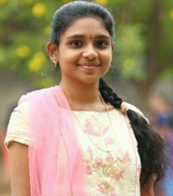
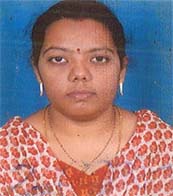
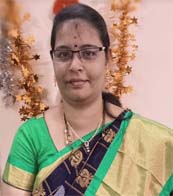 ;
;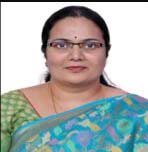

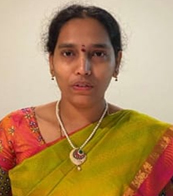
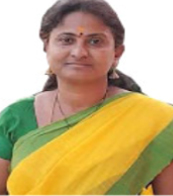
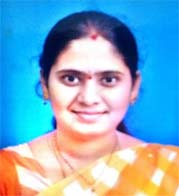
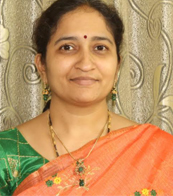
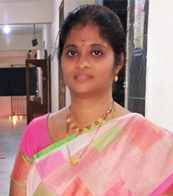
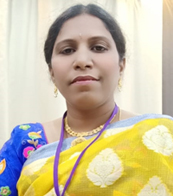
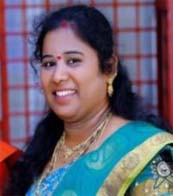
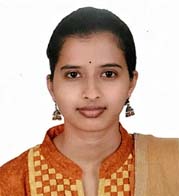
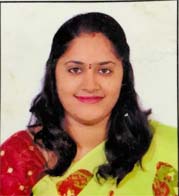
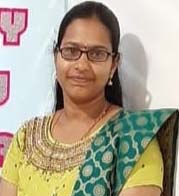

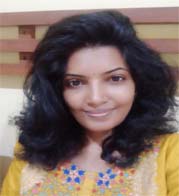
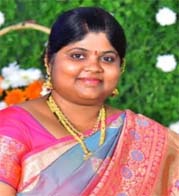
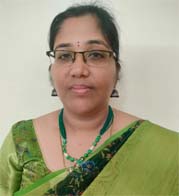
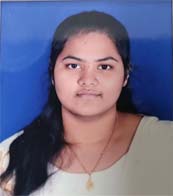
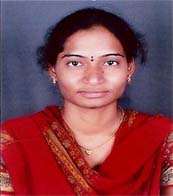
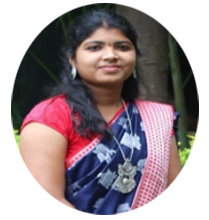
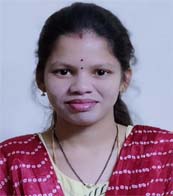
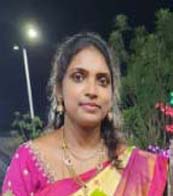
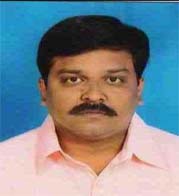

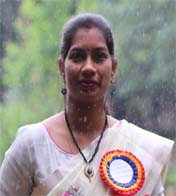 Name of the Faculty: B SHIVA LAKSHMI
Name of the Faculty: B SHIVA LAKSHMI